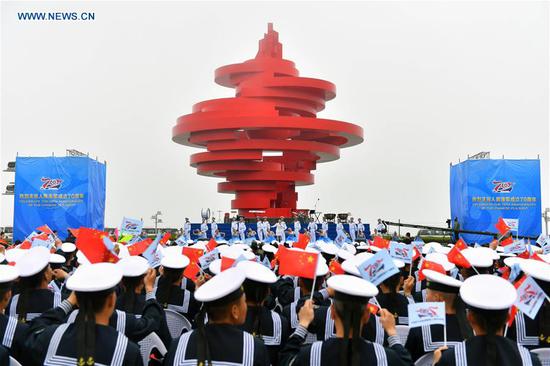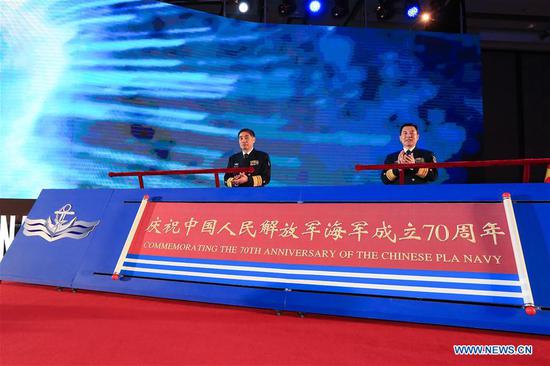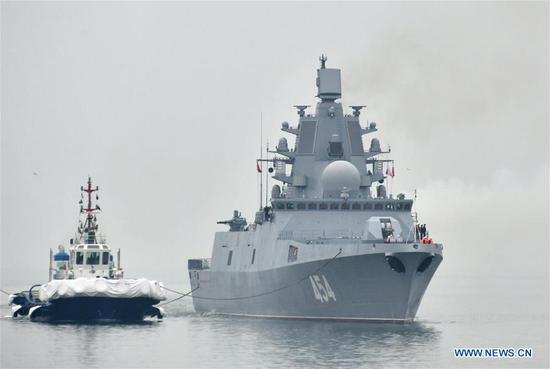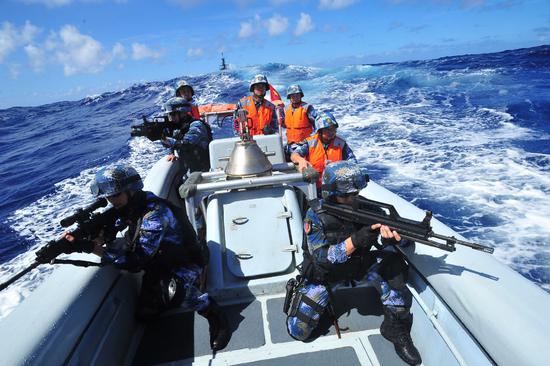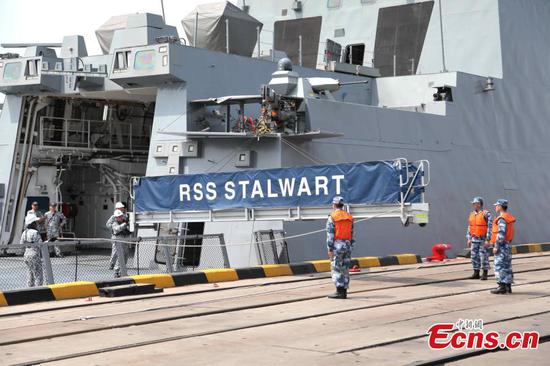
Two fighter jets attached to a regiment under the PLA Naval Aviation University take off during a flight training course. /Photo via chinamil.com.cn
However, a carrier pilot is not only a demanding occupation but a highly risky one. Taking off and landing on an aircraft carrier is considered the most challenging task for any pilot.
In March, the PLANAF lost two naval pilots in a training accident after they chose not to eject from their jet to steer the plane away from civilians on the ground. In 2016, another pilot playing a carrier-based J-15 fighter was killed during a landing attempt.
The PLANAF now has around 25,000 personnel and 600 aircraft, making it the second largest naval air force in the world that's increasingly important to safeguarding China's maritime rights and interests.

A fighter jet attached to the PLA Naval Aviation University fires air-to-ground missiles at simulated ground targets during a live-fire training exercise for new pilot cadets in northeast China's Liaoning Province, April 10-12, 2019. /Photo via chinamil.com.cn
Navy going blue
When the PLA Navy was first established 70 years ago, it was only capable of coastal defense. From the mid-1980s, the PLAN has adopted "offshore waters defense" as its main strategy. However, this strategy is no longer adequate for protecting China's maritime interests and security needs under new circumstances.
Last August, the New York Times reported that the PLAN's modernization has shifted the balance of power in the Pacific, where the United States has operated unchallenged since the naval battles of World War II.
In recent years, with the U.S. advancing its Indo-Pacific strategy and identifying China as a strategic rival, there has been a notable rise in maritime incursions and face-offs between the two navies.
The PLAN is shifting its focus from "offshore waters" to "high seas," with a combined strategy of offshore defense and open-sea protection, according to a 2014 Navy white paper.
China's aircraft carriers will provide the basis for a more proactive "open-sea protection," Yang noted. "China's development of sea power and going to the distant ocean is inevitable."










